It’s different for women to collect tattoos than men. Back in the 1970s when tattooing was just starting to become an interesting, edgy way for people to express themselves, tattoo shops even had a special section of art dubbed, “for the ladies.” Little hearts and cute animals were something for women to hide away on a breast, hip, or shoulder.
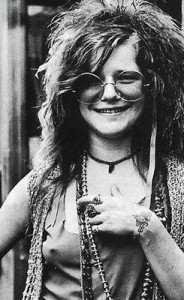
Janis Joplin popularized the small tattoo style for women after she got a delicate Florentine bracelet tattoo on her wrist from famed tattoo artist, Lyle Tuttle at his shop in San Francisco. He went on to put the Joplin bracelet on hundreds of women. After awhile, having one or two “small, cute and hidden” tattoos became “gender appropriate,” and if the tattoos were visible, like the Joplin bracelet, small and mild was still the norm for years.
Over the last few decades, women’s ink started to creep out from under their shirts to cover their bodies in earnest, with images that are not so meek or mild. In fact, for the first time in recent U.S. history, women are beginning to outnumber men as tattoo collectors, and they are also becoming “heavily tattooed.” But if women are supposed to strive for beauty, then collecting large, visible, and not-so-cute imagery such as snakes or skulls crosses a socially appropriate gender line. It is not uncommon for heavily tattooed women to be sexually harassed with public comments, like: “You’re such a pretty girl, why would you do something like that to yourself?” In other words, why would you “make yourself ugly?” Women should be objects of beauty.
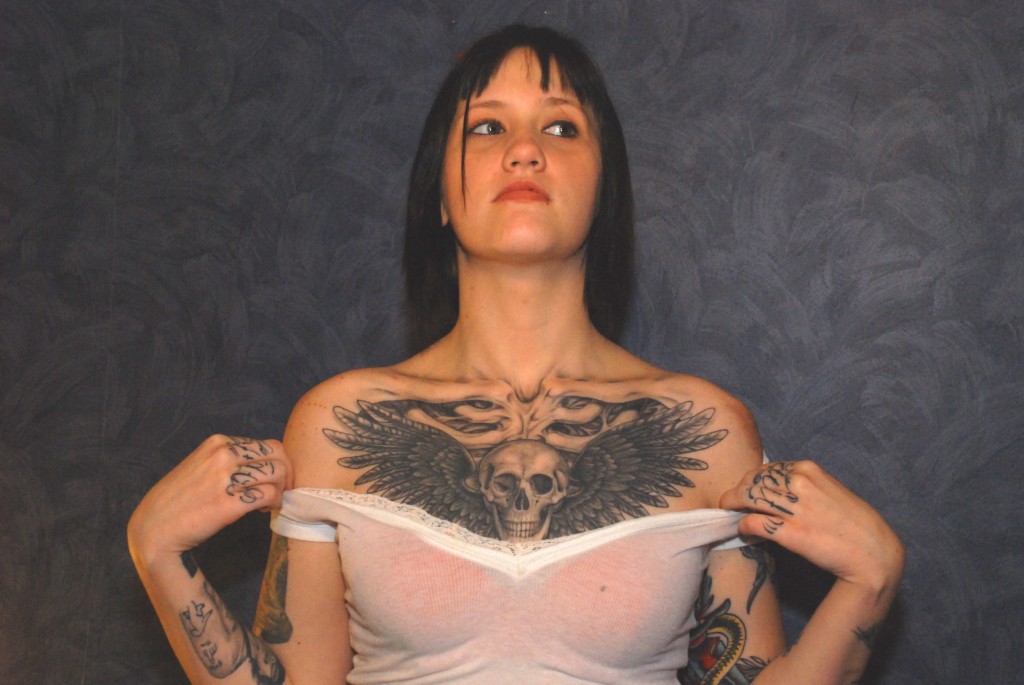
Embodied gender transgression is the topic of my recently published book, Covered in Ink: Tattoos, Women, and the Politics of the Body (NYU Press, 2015). While other tattoo ethnographies study people with one or more tattoos, Covered in Ink exclusively focuses on “heavily tattooed” women or those who violated that traditional mandate to keep their ink small, cute, and hidden.
I started this research as a heavily tattooed woman who herself wondered if her experience was representative of other women who chose to cover their bodies in ink. Did other women hide their tattoos from their fathers, or carry around a sweater in their car for last minute tattoo hiding, as they went about their day? Did strangers approach them and to touch their skin without permission? Was it common for them to worry about losing their jobs, in the chance that a tattoo might pop out from under their sleeve?
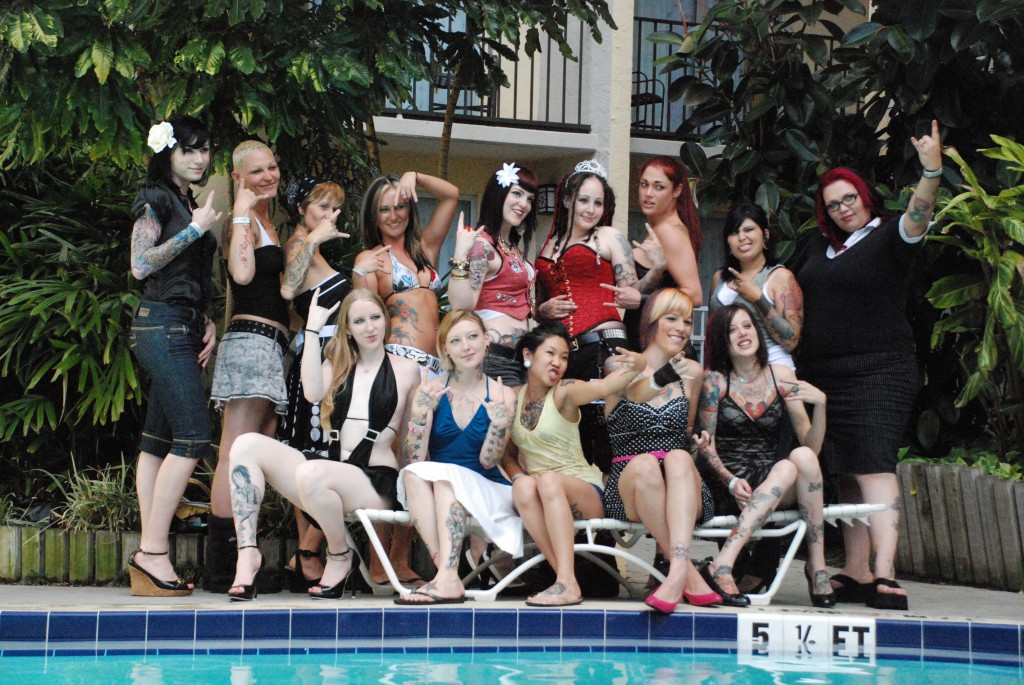
From 2007 when I attended my first Marked for Life all-female tattoo convention held annually in Orlando in January until 2010, I traveled to tattoo studios, conventions, and the homes of seventy women tattoo artists and collectors.
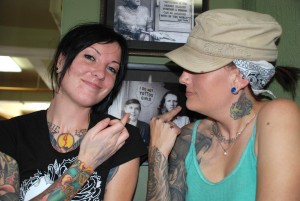
These beautifully tattooed women were an inspiration to me, and their stories did overlap with my own in many ways. I share their experiences in this book and also a documentary film, Covered. [https://vimeo.com/94019352]
Each chapter of the book opens with a personal story of my own before sharing the similarities and differences across women’s experiences in the varied contexts of their lives — the family, the workplace, and the larger societal beauty culture within which women define themselves. It wasn’t surprising for me to learn for example that for other women, too, there is a world of difference between having a small, safe tattoo and sporting something like a large skull on your forearm, especially in terms of the negative social sanctions we receive.
“What does that say on your arm?” A man asked me as I sat in a coffee shop, deeply immersed in a textbook, studying for an exam, when I was eighteen years old.
“Feminist.” I replied, looking up at him, cringing as I awaited his response.
“Oh? Does that mean you hate men?” He asked with a frown, shaking his head.
“Something like that,” I replied.
The lettering this man was so interested in evaluating was my second tattoo, a stylistic, cursive script that stood alone on my arm until I collected more tattoos around it, making it harder to discern. It always leads to questions. And whenever I clarify that it says “feminist,” well, you might imagine the interactions that follow, with men attempting to define the word and me offering up sassy answers, growing more insolent depending on how bold I feel at the moment. The chapter “Tattoos Are Not for Touching” shares this story and the voices of other women who have been reprimanded for their tattoo collection, including the stares, comments, and touches that sociologist Erving Goffman demonstrated in his research on public self presentation.
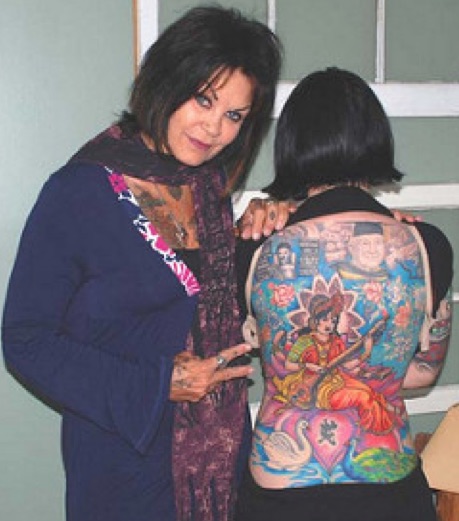 During my fieldwork I found an amazing artist who spent five years giving me a back piece tattoo, in her own beautiful style, that represented my academic journey.
During my fieldwork I found an amazing artist who spent five years giving me a back piece tattoo, in her own beautiful style, that represented my academic journey.
Since Covered in Ink has been published I’ve been hearing more women’s stories of their artwork and the social struggles, both positive and negative, that accompany them.
What’s yours?
________________________
Listen to Beverly Yuen Thompson’s interview on KERA’s Think with host Krys Boyd.
Beverly Yuen Thompson is an Associate Professor and Chair of Sociology at Siena College, Loudonville, New York. She earned a PhD and MA in Sociology from the New School for Social Research in New York, a Master’s Degree in Women’s Studies from San Diego State University, and a Bachelor’s Degree in Political Science from Eastern Washington University. Her first book, Covered in Ink: Women, Tattoos, and the Politics of the Body, was published by NYU Press in 2015. Her research interests include subcultures, visual culture, and gender.


Comments 1
kimberly Townsend — September 27, 2015
kudos to you! I've been collecting tattoos for over 25 years and have seen much change in that time. change for the better! although I haven't given much care in other people perception of me, I cannot help but notice the reaction I get when I'm out and about. truly, it is usually positive and complimentary. what I think is interesting is that when I have traveled in the northeastern part of the US, I am faced with a bit more negativity and strangers being very forward and vocal with their disapproval. thank goodness I don't care! I am so happy with myself within and each tattoo has let me love myself just a little more. peace & love. kim